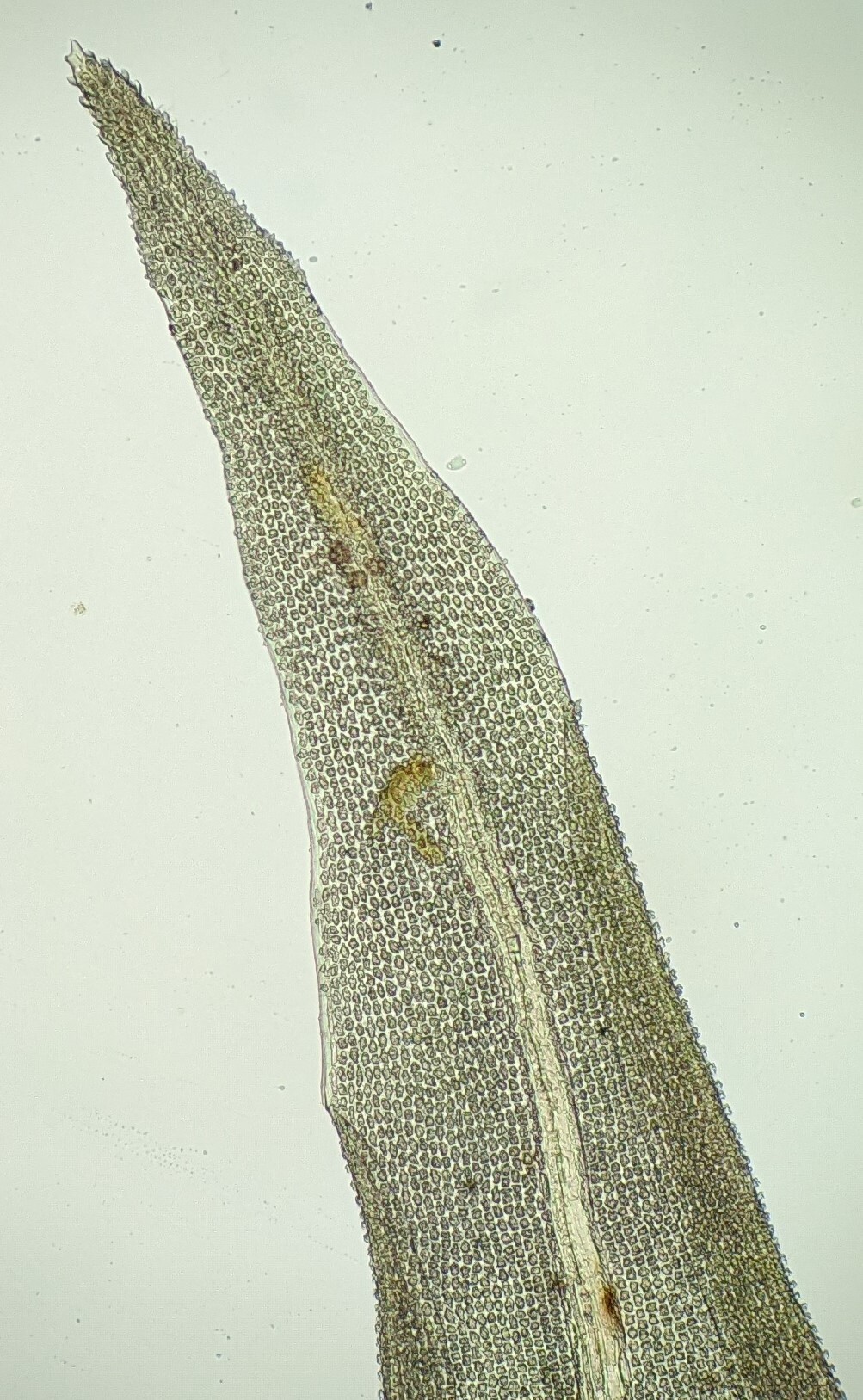Sclerodontium
Dioicous. Asexual reproduction by caducous leaf apices (not in Victoria). Mats or tufts on rocks or rarely logs, tree bases or soil. Stem creeping with many erect branches, with sparse rhizoids near base; central strand present, poorly defined. Leaves ovate-lanceolate, arranged around stem and facing all directions, erect-spreading or falcate-secund when moist, appressed with spreading tips, incurved and contorted (not in Victoria), or scarcely altered when dry; apex acuminate, often with a smooth hyaline hairpoint; costa subpercurrent to excurrent; margin entire, plane or incurved, with a border of (2–)3–4 (–8) rows of linear hyaline cells; laminal cells isodiametric, hexagonal, quadrate or irregular, becoming more elongate to linear at base near costa, adaxially smooth throughout or uni- or pluripapillose with simple papillae away from base near costa, abaxially uni- or pluripapillose with simple or multifid papillae away from base near costa; alar cells well-differentiated, numerous, quadrate to short-rectangular, not inflated, reddish brown, forming a large triangular group. Perichaetia lateral. Capsules exserted, erect or inclined, curved, ovoid, ellipsoid or oblong, smooth, without an annulus, without stomata. Calyptra cucullate, smooth, glabrous. Operculum rostrate. Peristome of 16 teeth, asymmetrically split to around half of the length into segments.
Two species shared between Malesia, Australia, New Caledonia, Brazil and the Kerguelen Islands (Crum 1986); one species in Victoria.
 Spinning
SpinningSynonyms
Crum, H.A. (1986). A survey of the moss genus Sclerodontium. Hikobia 9: 289–295.


